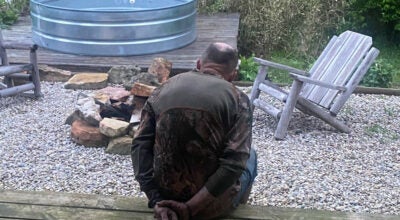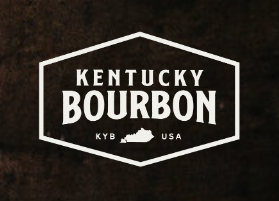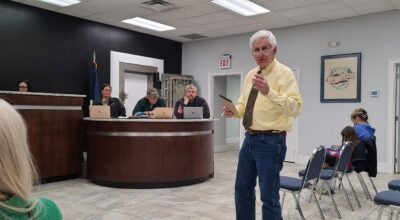Students present survey on stigma of addiction in Boyle County
Published 7:00 am Friday, December 31, 2021
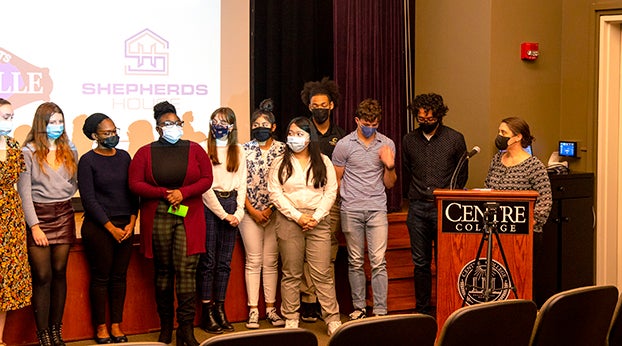
- Students of the Research Methods in Sociology class answer questions from the community after finishing their Stigma as an Obstacle to Addiction presentation. - Photo by Fiona Morgan
Centre College students in the Sociological Research Methods class conducted surveys in Boyle County to study stigma as an obstacle to addiction recovery. They presented their findings to the community earlier this month.
Students sent out two surveys in the fall of 2021 to determine whether stigma is an obstacle to recovery, specifically in opioid addiction. The recovery/addiction survey went to people either in recovery or active addiction. The community survey was for community members who had either not dealt with addiction, or had recovered and are working with people in addiction.
Class members also interviewed some people from both groups, and compared their attitudes about stigma and discrimination.
Professor of the class Kaelyn Wiles partnered with the Boyle County Agency for Substance Abuse Policy (ASAP) to find survey respondents and interviewees.
Wiles has worked with Kathy Miles from ASAP for the past five years for the class. In recent years, the class focused on studying different obstacles to substance use recovery. Stigma kept coming up as an obstacle, so Wiles decided to focus on the topic further.
Miles is able to use the data they gather to improve resources for people in recovery in Boyle County. She explained that their research is valuable because ASAP doesn’t get much local data.
“We have much difficulty getting really local data, and so we look at national data, state data; but to get data from our community is really hard and that’s been one of the blessings of this class the last few years,” Miles said.
Miles helped students distribute electronic and paper recovery/addiction surveys at Spero Health, Shepherds House, Isaiah House, and the syringe exchange program. They sent the community survey to people on ASAP’s email list, some of whom forwarded the survey to other members of the community. Surveys were anonymous and voluntary.
Most community participants had some connection to the addiction/treatment world, either by working in health care, serving people in addiction, or having a family member suffering from addiction. Only 7% did not have a connection.
The community survey had older and higher-paid respondents. 73.8% were older than 45, and 97.4% made more than $45,000 a year. 60% had a graduate or professional degree. Women made up 73.8% with 26.2% men.
In the recovery/addiction survey, 90.7% of people were in recovery, and 9.3% were in active addiction. There were 97 respondents in the recovery survey and 58 in the community survey.
The recovery/addiction survey had younger participants, with 40.2% ages 18-34. 55.7% made less than $25,000 a year. Women and men in this survey both made up 50%. The large majority of 70.5% used opioids plus other substances; 17.9% only opioids, and 11.6% other substances.
Interviews from people in recovery showed that viewing substance abuse disorder as a medical condition has helped in destigmatizing substance abuse. It helps people move away from the belief that people with the disorder have personal moral failings.
One community interviewee said, “We have convincing science that now shows the impact of that addiction as a disease. There’s no question about that.”
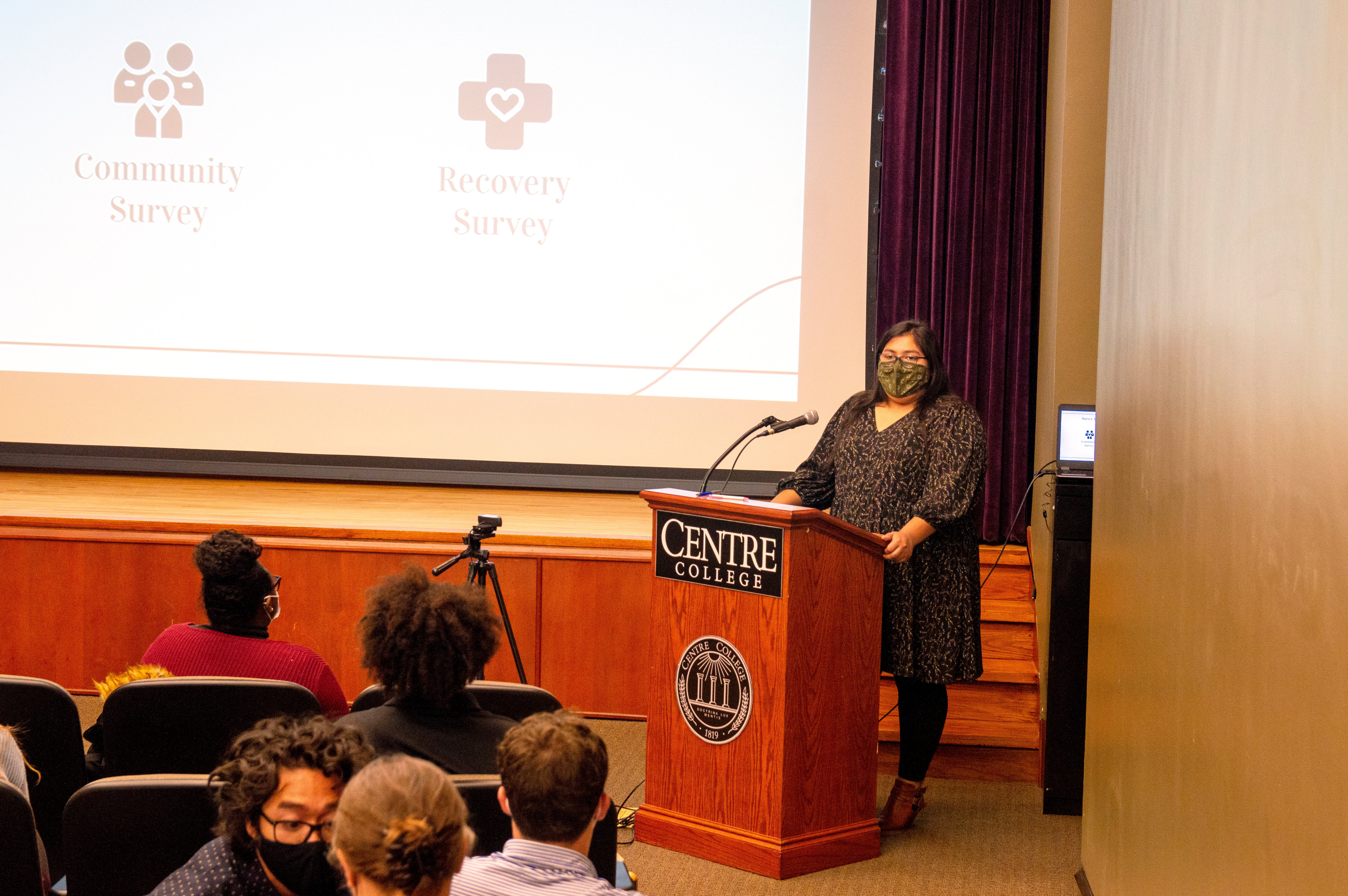
Students of the Research Methods in Sociology class take turns presenting information from their study. – Photo by Fiona Morgan
However, students also found that medicalizing the problem places the belief on people that they’re personally responsible for seeking treatment. Interviews showed that community members get confused or even resentful when people in addiction don’t choose to seek help. Some expressed frustration when they continue to help people who fall into relapses.
Students said that placing limits on how many relapses a person is “allowed” to have can place impractical expectations and timelines on people in recovery. The pressure to fit into a certain box while recovering can result in harmful or dangerous consequences when people relapse.
“We think our community would benefit from embracing the destigmatizing aspects of medicalization without placing all of the responsibility on individual patients to get better,” one student said in the presentation.
Another obstacle to recovery is stigma in the workplace. While the government is working to incentivize some businesses to hire people in recovery, 58.3% of residents in recovery have had trouble finding or keeping a job related to their substance abuse disorder. Most employers still require background checks and won’t hire anyone with a criminal or substance abuse history.
The large majority of respondents in the recovery survey said that, related to substance abuse, they experienced discrimination from employers, discrimination from medical professionals, have been frequently unable to pay bills, and experienced bad credit or debt.
In each of those responses, women experienced more discrimination than men- anywhere from 5-25% higher. Wiles said this finding was especially significant and is something she wants the community to pay attention to.
Another significant finding is that of the 61.9% in recovery who were prescribed opioids, 60.2% said their provider did not talk with them about the risks of opioid addiction.
In both surveys, about 70% of people agreed with the statement, “most people think less of a person who has been in treatment for substance abuse.”
One interviewee spoke about going to a church looking for help, and feeling judged and rejected. Students noted that people in recovery felt worse when their friends rejected them than their families, possibly because that stigma alienates them in a wider group of people.
Another finding students found surprising was that in response to the statement, “I think most people who have substance use disorder can recover with the appropriate support,” 50% of community members strongly agreed and 38% somewhat agreed; whereas 84.2% in recovery/addiction strongly agreed, 15.8% somewhat agreed and no one disagreed.
Given that many community members from the survey are active in helping people recover from addiction, students thought they would have higher hopes for those in recovery.
People in recovery showed more support to others in recovery in terms of willingness to hire them, and belief in their ability to make good choices.
Ultimately, students concluded that stigma can lead to secrecy, silence, denial, shame and guilt. Stigma makes people less likely to seek help. In some cases, they may be denied services, which leads to delays in treatment and recovery, poor quality recovery, and an increase in deaths in the community.
Miles thanked the class for their hard work in getting the data. She said that even though society has made progress in better treating people with substance abuse disorder, the surveys showed her how much work still needs to be done and how ASAP can better help.
“It’s been a wonderful, unforgettable semester and it enabled us to use research methods for the purposes for which they were designed, which is to be of service to the world and to try to make it a better place,” Wiles concluded.


